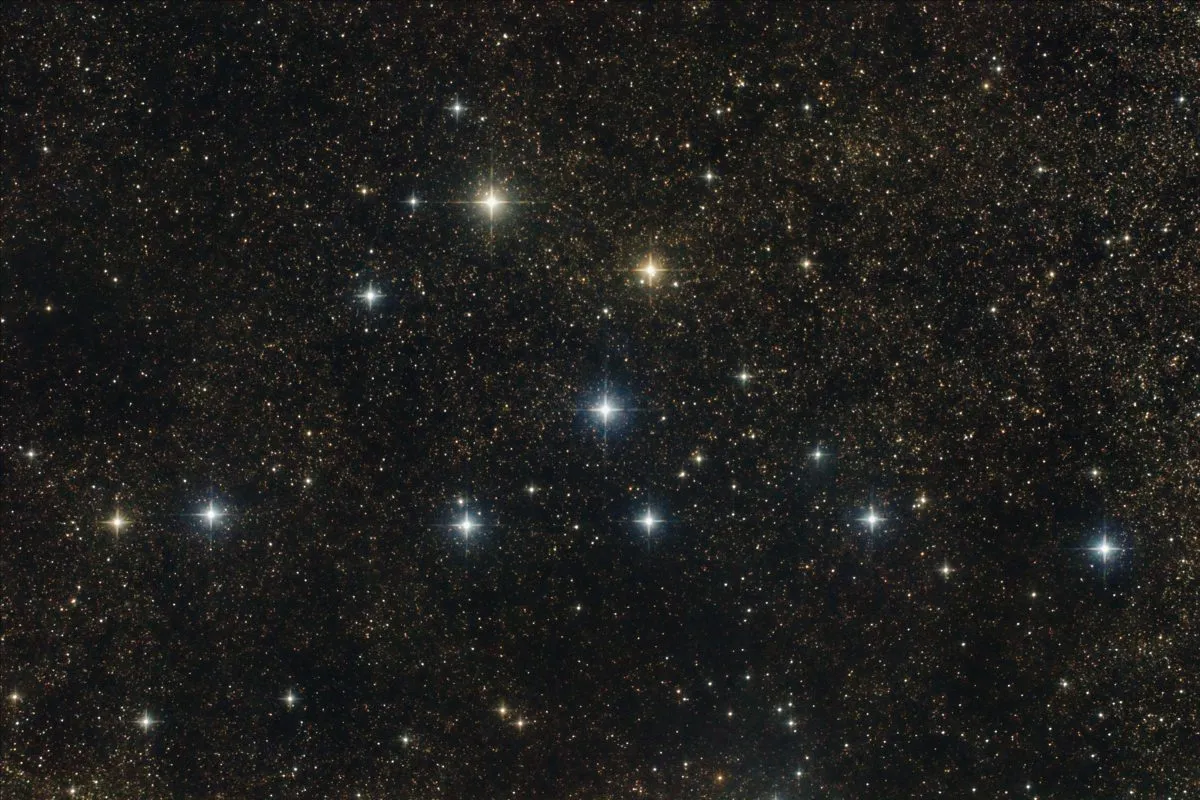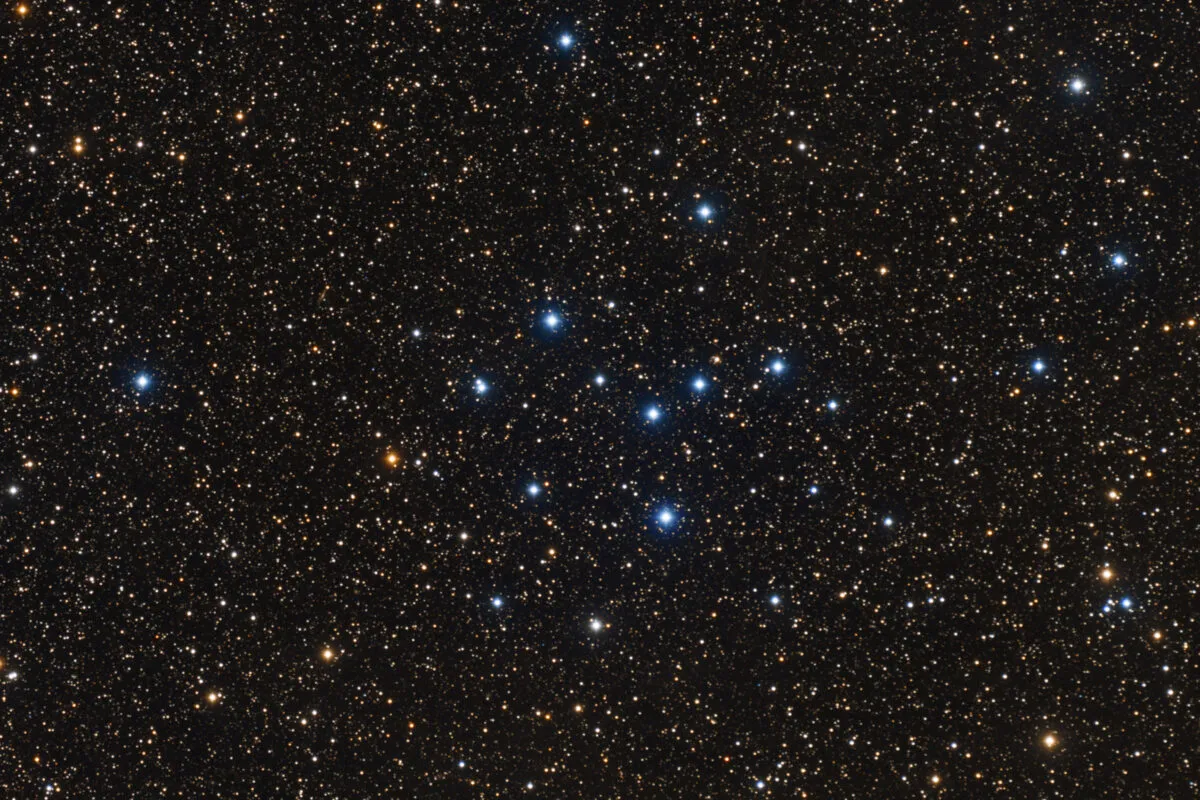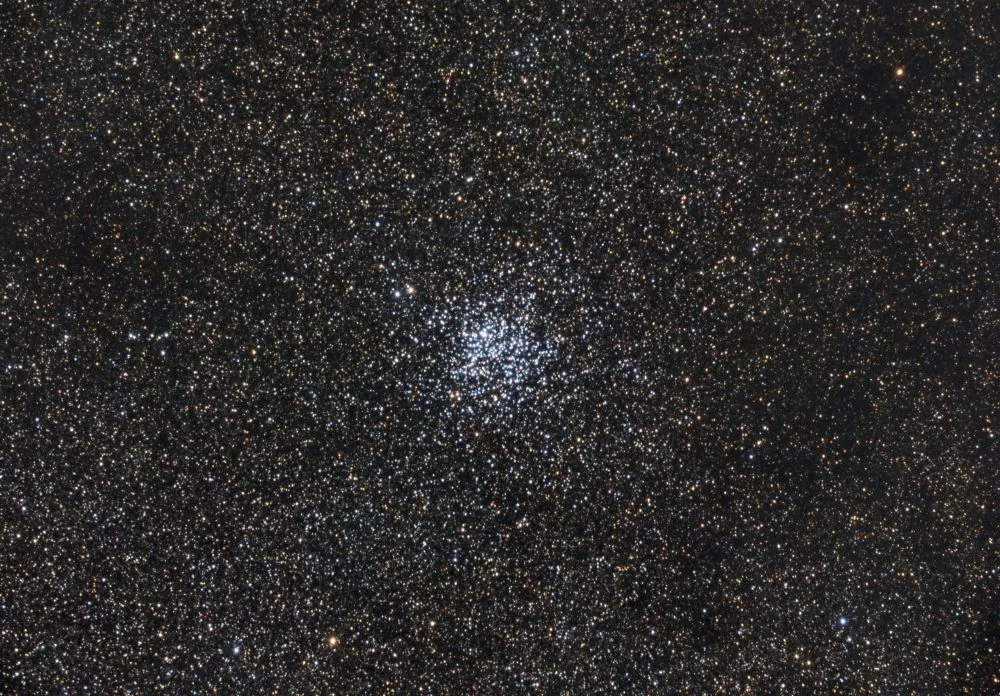You might think that summer isn't a great time for observing deep-sky objects through a telescope, but when darkness does eventually fall on those short summer nights, there's still plenty to see.
We've previously written about the amazing summer planetary nebulae that can be seen during the brighter months, and of course there are wonderful summer stars and summer constellations to catch too.
Here we'll look at 6 wonderful star clusters that you can see in the summertime, and where you can find them.
To help with this, download our Summer Star Clusters Tour chart (PDF)
And if star clusters are really your thing, check out our list of star clusters you can see with the naked eye.
6 summer star clusters
1: Collinder 399

There are many beautiful, varied open clusters visible at this time of year, but Collinder 399, also known as Brocchi’s Cluster, isn’t strictly one of them! Informally known as the Coathanger Cluster (under low power it forms the shape of a clothes hanger), this is not a true cluster but just an amazingly fortuitous line-of-sight pattern or asterism.
Analysis of the ‘object’ revealed only six of the brighter stars shared common motion properties. It’s around 1.7° wide, 0.5° high and visible to the naked eye given good eyesight. It sits two-thirds of the way along the line from Vega (Alpha (α) Lyrae) towards Altair (Alpha (α) Aquilae).
2: IC 4756

Our next target brings us into true cluster territory. IC 4756 is located in Serpens, 4.5° west and 1° north of mag. +4.6 Ayla (Theta1 (θ1) Serpentis). Alternatively, extend a line from the Coathanger Cluster through mag. +3.0 Zeta (ζ) Aquilae for a little over the same length again.
IC 4756 has several names including Graff’s Cluster and the Tweedledee Cluster as it’s paired with NGC 6633 (below). It’s also sometimes referred to as the Secret Garden Cluster. It’s a large object with an apparent diameter of 1°. It sits in the open part of a wedge pattern formed from stars between mag. +7.0 and +6.3. The cluster is best suited for low powers. With an integrated magnitude of +4.6, it can be seen with the naked eye.
3: NGC 6633

The Tweedledum Cluster, NGC 6633 lies 3° north-northwest of IC 4756, a small distance but enough to put it across the border into Ophiuchus. Like IC 4756, NGC 6633 has several informal names, including the Captain Hook Cluster and Wasp-Waist Cluster. It appears half-a-degree across and like IC 4756 has an integrated magnitude of +4.6.
A small scope shows around a dozen stars brighter than 10th magnitude. The region is very star-rich, hiding the true nature of both clusters. The southwest of NGC 6633 forms an elongated northeast–southwest teardrop, the abdomen of the ‘wasp’. The insect’s wings are represented by a thin wedge of stars heading northeast from the cluster centre.
4: IC 4665

Bright open cluster IC 4665 lies 10.3° west and 1.2° south of IC 4756, although it’s easier to find from mag. +2.8 Cebalrai (Beta (β) Ophiuchi), 1.3° to the southwest. IC 4665 is a large coarse open cluster at 70 arcminutes across and contains around 30 member stars. The brightest shines at mag. +6.9, but the integrated magnitude of the cluster places it well within naked-eye territory at mag. +4.2.
As with all the objects so far, the best way to observe IC 4665 using a telescope is with a low-power eyepiece. Sometimes referred to as the Summer Beehive, with a good imagination you may be able to pick out the word ‘HI’ created by the cluster’s stars.
5: Collinder 350

Our penultimate target is arguably the hardest. It’s bright at mag. +6.1 and large with an apparent diameter of 39 arcminutes, but it’s also very sparse and easy to pass over without realising you’ve seen it. It is located approximately 1° south of mag. +3.8 Gamma (γ) Ophiuchi, itself 2.1° south-southeast of Cebalrai.
Two brighter stars sit either side of the cluster: mag. +7.5 HIP 87244 and +6.6 HIP 86969. The cluster sits southwest of a ‘lobe’ of the Milky Way extended towards Ophiuchus, Collinder 350’s size and sparse appearance helping it to camouflage into the background. Using a low power, a small scope will reveal around 15 members of this cluster.
6: M11

No tour of bright summer open clusters would be complete without a visit to the spectacular Wild Duck Cluster, M11. This is easy to find by continuing the arc of stars at the southern end of Aquila: mag. +4.4 Althalimain (Lambda (λ) Aquilae), mag. +4.0 12 Aquilae and mag. +4.8 Eta (η) Scuti.
A 150mm scope will show around 150 stars, the brightest around 11th magnitude. The stars appear clumped together with dark lanes between the clumps, almost as if something has cracked the cluster into pieces. Larger apertures offer a stunning view of M11’s 2,900 or so stars, 500 of which are brighter than 14th magnitude.
Have you completed our summer star cluster tour? Let us know by emailing contactus@skyatnightmagazine.com.

